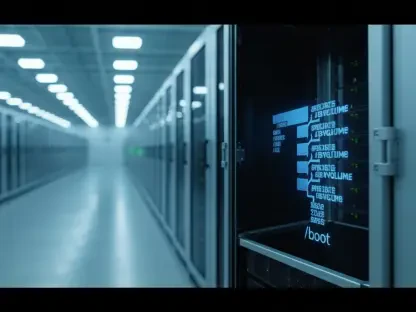The digital landscape has become increasingly dynamic, urging industries to adopt more contemporary, collaborative methodologies. In this evolving environment, the introduction of real-time collaboration in web development marks a paradigm shift for developers, designers, and marketing teams alike. Previously, workflows were linear, often riddled with inefficiencies due to sequential handoffs that could bottleneck production. This traditional approach frequently led to delays, miscommunication, and increased costs, especially in fast-paced projects. Today, real-time collaboration tools have emerged to dismantle these silos, fostering swift and seamless communication between different team roles and enhancing the overall pace of digital innovation.
With platforms like Webflow now launching real-time collaboration features, the essence of teamwork in web development is being redefined. Announced through a private beta, Webflow’s initiative signifies more than just a new feature; it epitomizes a strategic evolution towards more integrated, efficient workflows. This development grants team members from various disciplines the ability to work collaboratively on tasks without the barriers of traditional divides that separated roles such as design, development, and content creation. As the web development industry evolves, the capability for multiple contributors to engage in simultaneous and instantaneous changes to digital content is proving invaluable in producing richer, faster, and more adaptive digital experiences.
Enhancing Workflow Efficiency and Team Dynamics
Real-time collaboration in web development represents a significant shift in how projects are managed, driving an increase in productivity by minimizing delays traditionally caused by sequential processes. The introduction of features that allow for parallel workflows contributes to a reduction in miscommunications and errors, leading to a more streamlined production cycle. Development teams are now equipped to handle complex challenges with increased responsiveness, leveraging real-time updates to make informed decisions promptly.
Webflow’s integration of collaborative tools into its platform embodies this shift, offering companies the advantage of seeing events unfold in real-time, which in turn bolsters synergy among team members. This capability cultivates a more agile environment where ideations and iterations can be swiftly tested, adjusted, and approved by pertinent stakeholders without interrupting other ongoing efforts. The importance of breaking down traditional barriers is underscored by the growing demand for seamless, cross-functional collaboration—essential for companies striving to deliver competitive digital experiences in a timely manner.
Furthermore, by eliminating the pauses normally associated with waiting for sequential approvals or edits, these tools grant newfound agility to teams. Enabling designers, developers, and marketers to execute tasks in parallel has led to quicker feedback loops and iterations. This approach not only optimizes the resources spent on development projects but also enhances creativity by allowing concepts to be rapidly tested and refined in the collective workspace. Consequently, the ability to collaborate in real-time is not just a tool for efficiency but a catalyst for creativity, offering a competitive edge in fitting within market trends and client requirements.
Bridging Global Teams with Innovation
As the digital ecosystem expands, so does the need for global collaboration, making real-time tools pivotal for multinational teams striving to maintain cohesiveness. Real-time collaboration capabilities offer substantial benefits for organizations operating across different time zones, providing them the ability to coordinate efforts without the common hindrances posed by geographical separations. The removal of these barriers is critical for synchronized global operations, ensuring that projects maintain consistency and quality standards regardless of location.
Webflow’s enhancement of its platform with real-time collaboration signifies a step forward in addressing such challenges, facilitating a more unified approach to web development practices. By providing real-time insights and allowing concurrent work activities, these tools foster a more inclusive and effective digital workspace. This setup caters to a broad array of users, from small businesses adjusting to the digital market to larger enterprises requiring high-level customization for various regions.
Moreover, features like page branching and activity logs empower teams to track changes and manage roles efficiently, which adds layers of control and governance over the process. Such technological advances ensure that team settings and permissions are finely tuned to assign tasks, monitor progress, and uphold accountability, thereby reducing the chances of errors or mismanagement. By transforming the way dispersed teams interact and collaborate, real-time tools are proving indispensable in the progression towards a truly global and inclusive digital network.
A New Era in No-Code Development
The advent of real-time collaboration tools aligns seamlessly with the rising trend of no-code development platforms, which are revolutionizing how web solutions are delivered by minimizing dependency on extensive coding knowledge. As these platforms evolve, so does the utility of tools designed specifically for less technical users who seek to produce high-caliber website designs without the traditional resources that professional coding demands. Real-time collaboration extends the accessibility of these platforms, providing additional functionality that both novices and experts can leverage to expedite project timelines and quality outcomes.
Webflow’s strategic decision to enhance collaboration functionality without additional costs marks a substantial benefit for various user groups, including those in digital agencies and enterprise teams. This approach aims to democratize web development, making it more inclusive and open-ended. By coupling collaborative tools with features like drag-and-drop editors and integrated hosting solutions, platforms encourage a diverse range of individuals to participate in creative digital processes. This democratization ensures that innovative ideas are surfaced and tested, regardless of the technical prowess of contributors.
In addition, the integration of these tools reduces the perceived technological barriers associated with developing responsive and interactive web designs. As a consequence, both technical and non-technical team members are empowered to contribute meaningfully towards the completion of web development projects. This diversification of skills within teams not only enhances creative output but also accelerates project launch times. Consequently, the seamless fusion of real-time collaboration with no-code development platforms is facilitating a new era in web development, characterized by adaptability, inclusivity, and accelerated innovation cycles.
Preparing for the Future of Web Development
The digital realm is evolving rapidly, pushing industries to embrace modern, collaborative methods. This shift has brought about real-time collaboration in web development, marking a significant change for developers, designers, and marketing teams. Traditionally, workflows were linear and prone to inefficiencies due to sequential handoffs, leading to delays, miscommunication, and higher costs, particularly in fast-paced projects. Real-time collaboration tools have now made it easier to break down these barriers, fostering swift communication across different roles and speeding up digital innovation.
Webflow’s launch of real-time collaboration features—announced through a private beta—represents more than just a tool update; it marks a strategic evolution toward integrated, efficient workflows. It allows teams from various disciplines to work together on tasks without the traditional divides between roles like design, development, and content creation. As web development continues to evolve, the ability for multiple contributors to make simultaneous updates is proving invaluable, leading to richer, faster, and more adaptive digital experiences.









